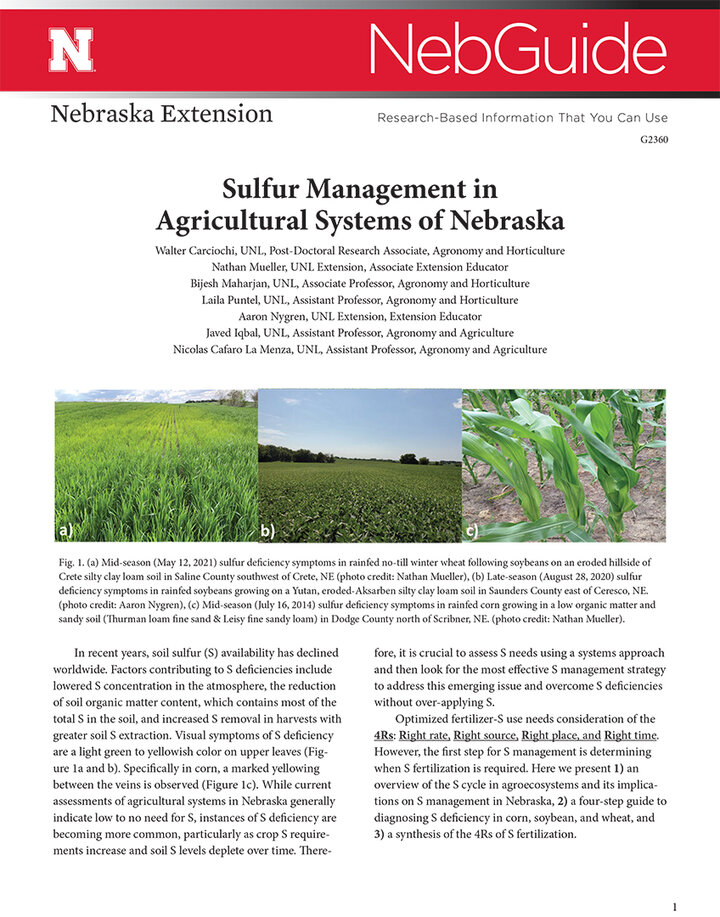
In recent years, soil sulfur (S) availability has declined worldwide. Factors contributing to S deficiencies include lowered S concentration in the atmosphere, the reduction of soil organic matter content — which contains most of the total S in the soil — and increased S removal in harvests with greater soil S extraction. While current assessments of agricultural systems in Nebraska generally indicate low to no need for S, instances of S deficiency are becoming more common, particularly as crop S requirements increase and soil S levels deplete over time. Therefore, it is crucial to assess S needs using a systems approach and then look for the most effective S management strategy to address this emerging issue and overcome S deficiencies without over-applying S.
A new NebGuide from Nebraska Extension, “Sulfur Management of Agricultural Systems of Nebraska” (G2360), describes how to properly manage sulfur in agricultural systems, with a focus on the 4Rs of S fertilization — right rate, right source, right place and right time — the sulfur cycle, and sulfur concentration within the state of Nebraska.
NebGuide G2360 is free and available online in both PDF and webpage formats.
